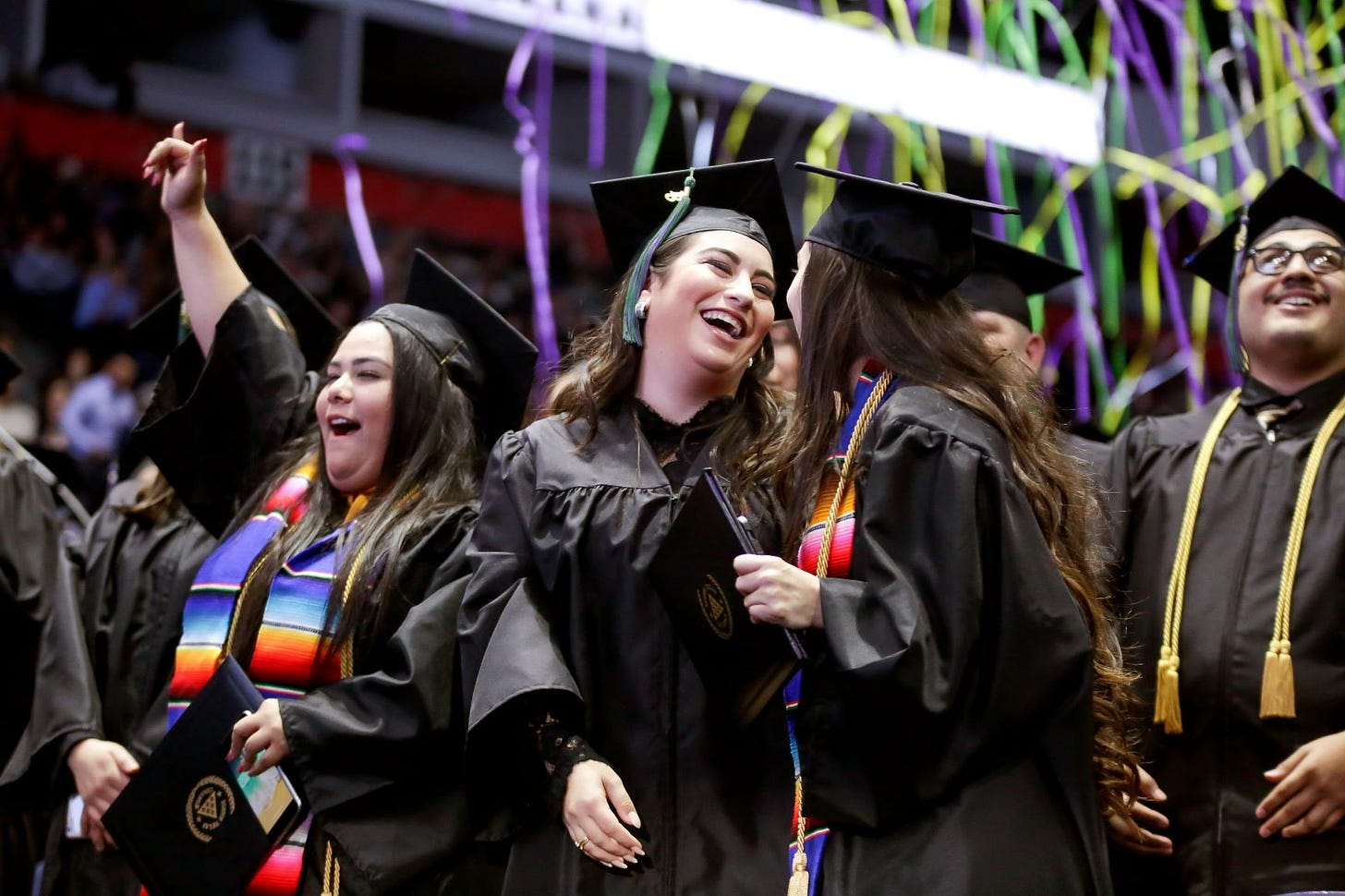More Latinos Earned Degrees This Past Decade Than Any Time In History
70% more Latino students earned associate’s, bachelor’s, master’s, or doctorate degrees in 2017 compared to 2005.
JOIN TODAY and get 10% off your Daily Chela Insider subscription for an entire year.
The National Center for Education Statistics (NCES) has released an analysis of education trends across all levels. The data revealed a significant increase in Latino student enrollment at U.S. colleges and universities.
But while this growth is encouraging, Latino students still trail behind other groups in both enrollment rates and degree attainment.
Enrollment Trends: Progress with Room to Grow
In the 2017-2018 academic year, approximately 26 million students were enrolled in postsecondary institutions, including degree and technical/non-degree programs. Among these, 18-to24-year-olds in degree-granting institutions accounted for just 40% of the total student population, with the majority being non-traditional students over the age of 25.
Latino enrollment among 18-to24-year-olds rose from 27% in 2007 to 36% in 2017. While this marks significant progress, it still lagged behind the enrollment rate for Caucasians during the same period. Overall, the Latino presence in degree-granting institutions grew from 4% in 1976 to 19% in 2017, while the percentage of Caucasian students declined from 84% to 56%.
Degree Attainment: A Mixed Picture
The number of college degrees awarded in the U.S. increased by 32% between 2005-2006 and 2016-2017. Latinos saw the largest growth, with degrees awarded to Latino students rising by an impressive 70% during this period. This means 70% more Latino students earned associate’s, bachelor’s, master’s, or doctorate degrees in 2017 compared to 2005. In contrast, degrees awarded to Caucasians grew by just 19% over the same timeframe.
Despite this progress, Latino students still represent a small share of total degree recipients. In 2005-2006, Latinos earned just 5% of all degrees awarded, and by 2016-2017, this figure had only increased to 7%. Given that Latinos are the second-largest ethnic minority in the U.S., this modest growth highlights the need for continued efforts to close the gap.
Educational Attainment: State-Level Disparities
Nationally, only 15% of Latinos over the age of 25 held a bachelor’s degree or higher in 2017. This is significantly lower than the rates for other groups: 38% for Non-Latino Caucasians, 23% for African Americans, 56% for Asian/Pacific Islanders, and 18% for Native Americans.
Even in states with large Latino populations, the disparities persist. For example:
New Mexico: 27% of the total population over 25 had a bachelor’s degree or higher, but only 16% of Latinos did.
California: 34% of the total population over 25 had a bachelor’s degree or higher, compared to just 13% of Latinos.
Texas: 30% of the total population over 25 had a bachelor’s degree or higher, while only 14% of Latinos achieved the same level of education.
The Path Forward
The rapid increase in Latino college enrollment and degree attainment over the past decade is a milestone worth celebrating. However, the data underscores the persistent gaps that remain. While more Latinos are earning degrees than ever before, their overall representation in higher education and degree attainment still falls short of their potential.
As the Latino population continues to grow, addressing these disparities is critical—not just for the Latino community, but for the nation as a whole. By investing in equitable access to education and support systems, we can ensure that the progress made over the last decade accelerates in the years to come.
Dr. Claudia Araiza has held positions in various capacities in business, academic, and governmental settings ranging from business and economic analysis, business development, academic administration, research, teaching, and online course development.
JOIN TODAY & Get 10% Off A Daily Chela Insider Subscription For A Year!
Subscribers Get Exclusive News, Videos & Stories:
Our mission is to provide a platform for Mexican Americans, and cover news with the depth and context it deserves.
Here’s how you can help:
Make a Small Monthly Contribution: Your financial support will help us cover operational costs, pay our dedicated team, and expand our reach to more readers.
How To Support:
To subscribe, click on the button below. Thank you for your support and for believing in the power of independent media. Together, we can make sure that every voice is heard and every story is told.





